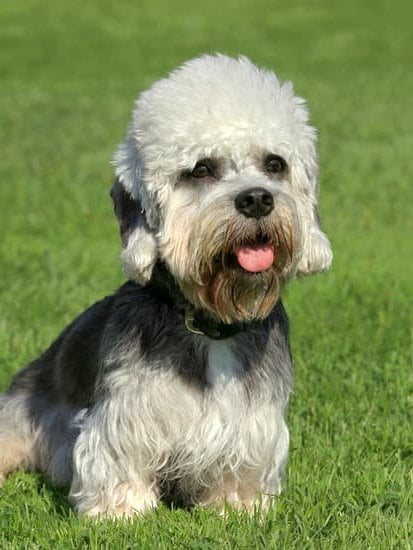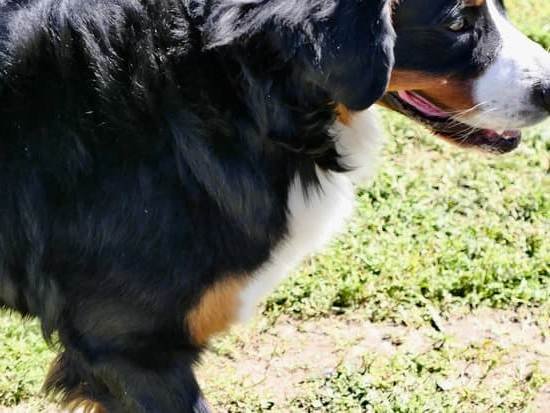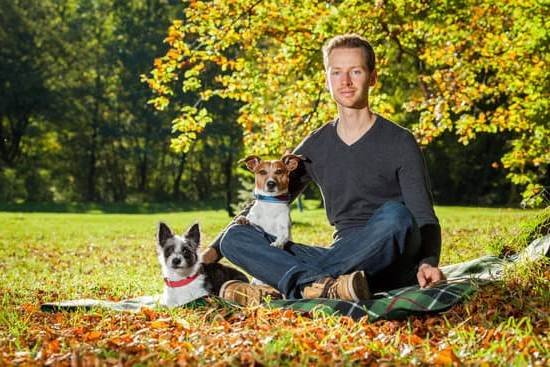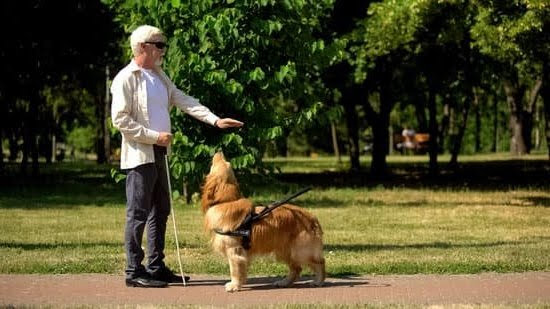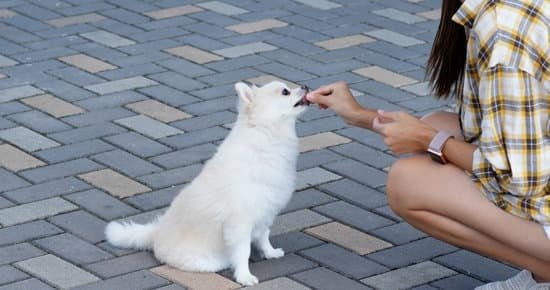What is positive gun dog training? Positive gun dog training is an approach that focuses on using rewards and positive reinforcement to train and develop a strong bond with your gun dog. This method emphasizes building trust, confidence, and a mutual understanding between the handler and the dog. In this article, we will explore the principles of positive gun dog training, its importance, and how to implement these techniques for successful results.
Positive gun dog training prioritizes the use of rewards such as treats, praise, and playtime to encourage desired behaviors in gun dogs. By utilizing positive reinforcement, handlers can create a fun and enjoyable learning experience for their dogs while achieving obedience and success in hunting tasks. This approach not only enhances the training process but also fosters a harmonious relationship between the handler and their gun dog.
In addition to understanding the concept of positive reinforcement, it is essential to recognize the role of operant conditioning in gun dog training. By utilizing various operant conditioning techniques such as shaping, capturing, and luring, handlers can effectively teach their gun dogs new commands and behaviors while maintaining a positive and supportive environment.
Furthermore, positive reinforcement in gun dog training extends beyond teaching commands; it also plays a crucial role in addressing behavioral issues, building confidence, and strengthening the relationship between the handler and their canine companion.
Understanding the Importance of Positive Reinforcement in Gun Dog Training
Positive reinforcement is a key aspect of gun dog training, as it focuses on rewarding desired behaviors rather than punishing unwanted ones. This section will delve deeper into why positive reinforcement is essential in creating a well-trained and happy gun dog.
The Psychology Behind Positive Reinforcement
Positive reinforcement works by associating a desired behavior with a rewarding stimulus, such as treats, praise, or playtime. This creates a positive association in the dog’s mind, making them more likely to repeat the behavior in the future. By understanding the psychological principles behind positive reinforcement, gun dog trainers can effectively shape their canine companions’ behavior without instilling fear or anxiety.
The Benefits of Positive Reinforcement in Gun Dog Training
Using positive reinforcement in gun dog training helps build a strong bond between the handler and the dog. It also enhances the dog’s motivation to learn and perform tasks, leading to quicker and more reliable obedience. Additionally, it promotes a positive learning experience for the dog, reducing stress and increasing their overall happiness and well-being.
Long-Term Impact of Positive Reinforcement
By utilizing positive reinforcement techniques in gun dog training, handlers can create dogs that are eager to work and willing to please. This approach fosters a harmonious relationship between the handler and the dog, resulting in improved performance in hunting or field work. Furthermore, positive reinforcement sets a foundation for continued learning and development throughout the dog’s life, ensuring they remain eager and responsive companions in the field.
The Role of Using Operant Conditioning in Gun Dog Training
Operant conditioning is a fundamental aspect of positive gun dog training. This psychological concept involves the use of reinforcement and punishment to shape the behavior of dogs through a system of consequences. When applied correctly, operant conditioning can effectively teach your gun dog the desired behaviors while minimizing unwanted ones.
Positive reinforcement is a key component of operant conditioning in gun dog training. This involves rewarding your dog with treats, praise, or play when they exhibit the desired behavior. By associating these positive rewards with specific actions, your gun dog will be motivated to repeat those behaviors in the future. This creates a strong bond between you and your dog, as they come to understand that good behavior leads to positive outcomes.
On the other hand, negative reinforcement involves removing an unpleasant stimulus when your gun dog exhibits the desired behavior. This could include stopping an aversive training technique or ending a stressful situation. While positive reinforcement focuses on adding something desirable, negative reinforcement focuses on removing something undesirable in response to the dog’s behavior.
By understanding and utilizing operant conditioning in gun dog training, you can effectively shape your dog’s behavior in a positive and productive manner. The use of positive reinforcement methods helps create a happy and willing worker in the field, strengthening the partnership between you and your gun dog.
Building a Strong Bond With Your Gun Dog Through Positive Training Methods
Positive gun dog training emphasizes the use of operant conditioning, which involves shaping the behaviors of your dog through positive reinforcement. This means that when your gun dog exhibits the desired behavior, such as retrieving or pointing, they are rewarded with treats, toys, or verbal praise.
This creates a positive association with the behavior and encourages them to repeat it in the future. By utilizing operant conditioning in your training sessions, you can effectively communicate with your gun dog and teach them important skills in a humane and enjoyable manner.
In addition to creating a strong bond between you and your gun dog, positive training methods also contribute to their overall well-being and mental health. Dogs thrive on positive interactions with their owners, and by using rewards and reinforcements during training sessions, you can ensure that your gun dog feels motivated, engaged, and happy. This not only leads to better performance in the field but also fosters a loving and harmonious relationship between you and your four-legged partner.
| Positive Gun Dog Training | Benefits |
|---|---|
| Strengthens bond between owner and dog | Promotes trust and respect |
| Enhances overall well-being of the dog | Creates positive association with training |
Choosing the Right Rewards and Reinforcements for Positive Gun Dog Training
When it comes to positive gun dog training, choosing the right rewards and reinforcements is crucial for success. By using the appropriate rewards and reinforcements, you can effectively motivate and encourage your gun dog to exhibit desired behaviors. This section will delve into the various types of rewards and reinforcements that can be used in positive gun dog training.
Types of Rewards
One of the key components of positive gun dog training is identifying the types of rewards that will most effectively motivate your dog. This can include food treats, toys, verbal praise, or physical affection. Understanding what motivates your specific dog is essential in choosing the right rewards for training.
Positive Reinforcement
Positive reinforcement involves providing something desirable to the dog immediately after they exhibit a desired behavior. This could be a tasty treat, a favorite toy, or enthusiastic praise. By consistently providing positive reinforcement when your gun dog performs as desired, you are more likely to see those behaviors repeated in the future.
Consistency and Timing
In addition to choosing the right rewards, consistency and timing are also critical factors in positive gun dog training. Rewards should be given immediately after the desired behavior is exhibited, so that the association between the behavior and the reward is clear to the dog. Consistency in rewarding desired behaviors will help reinforce those behaviors over time.
By understanding the importance of choosing the right rewards and reinforcements for positive gun dog training, you can set yourself up for successful and effective training sessions with your canine companion. Remember that every dog is unique, so it may take some trial and error to determine which rewards work best for your individual gun dog.
Avoiding Punishment and Negative Reinforcement in Gun Dog Training
In positive gun dog training, the focus is on using positive reinforcement to encourage and reward desired behaviors in your gun dog. This means avoiding punishment and negative reinforcement, which can create fear and anxiety in your dog, leading to a breakdown in the trust and bond between you and your canine companion. Instead of punishing undesired behaviors, positive gun dog training emphasizes redirecting and rewarding good behavior to shape your dog’s actions.
To effectively avoid punishment and negative reinforcement in gun dog training, it’s essential to understand the impact these methods can have on your dog. Punishment can lead to a lack of enthusiasm for training, as well as fear-based responses that hinder the learning process. Negative reinforcement, such as the use of shock collars or physical corrections, can also result in adverse behavioral issues and damage the relationship between you and your gun dog.
Implementing positive gun dog training techniques involves replacing punitive methods with strategies that emphasize praise, rewards, and constructive guidance. Here are some key principles to follow when avoiding punishment and negative reinforcement in gun dog training:
- Use positive reinforcements such as treats, praise, toys, or playtime to reward desired behaviors.
- Redirect unwanted behaviors through gentle but firm guidance rather than resorting to punishment.
- Create a supportive and nurturing environment that encourages learning and cooperation.
By embracing these principles and understanding the detrimental effects of punishment and negative reinforcement on your gun dog’s behavior and well-being, you can build a strong foundation for positive gun dog training that fosters a trusting partnership between you and your beloved hunting companion.
Tips for Implementing Positive Gun Dog Training Techniques
Positive gun dog training focuses on using positive reinforcement and rewards to encourage desired behaviors in your hunting dog. Here are some tips for implementing these techniques effectively.
First, it’s important to consistently use treats, praise, and other rewards to reinforce the behaviors you want to see in your gun dog. This could include retrieving, staying by your side, or responding promptly to commands. By consistently rewarding these actions, you can help ensure that your dog understands what is expected of them and is motivated to perform well in the field.
Additionally, be sure to use clear and consistent communication with your dog during training. This means using consistent commands and signals so that your gun dog understands what is expected of them. Clear communication can help prevent confusion and frustration for both you and your dog, leading to a more positive training experience overall.
Finally, make sure that training sessions are fun and engaging for both you and your dog. Positive gun dog training should be an enjoyable experience that strengthens the bond between you and your hunting companion. Incorporating games, variety, and plenty of positive reinforcement can help keep training sessions interesting and motivating for your gun dog.
By following these tips, you can effectively implement positive gun dog training techniques that will lead to a better-behaved and more enthusiastic hunting partner.
Real-Life Success Stories of Positive Gun Dog Training
Positive gun dog training has gained popularity in recent years as more and more dog owners realize the benefits of using positive reinforcement techniques. Here are some real-life success stories that showcase the effectiveness of this approach:
- One gun dog owner, John, found that by using positive reinforcement during training sessions, his Labrador Retriever was able to learn and retain commands much more effectively. Instead of resorting to punishment when the dog made a mistake, John focused on rewarding good behavior with treats and praise. As a result, his dog became more eager to participate in training sessions and developed a strong bond with John.
- Another success story comes from Sarah, who trained her Springer Spaniel using positive reinforcement methods. By consistently rewarding the desired behavior with treats and verbal praise, Sarah’s dog became not only well-behaved in the field but also a joy to work with. The use of positive reinforcement helped build confidence in her gun dog, leading to successful hunting trips and a strong relationship between Sarah and her canine companion.
- In addition, Jake, a professional gun dog trainer, has witnessed numerous success stories among his clients who have embraced positive training methods. By incorporating rewards such as toys, playtime, and access to favorite activities during training sessions, Jake’s clients have seen remarkable improvements in their dogs’ performance in the field. The dogs have become more enthusiastic about their work and more attentive to their owners’ commands.
These real-life success stories highlight what is positive gun dog training can achieve when implemented correctly with consistency and patience. It is clear that building a strong bond with your gun dog through positive methods can lead to impressive results in hunting performance and overall behavior.
Addressing Common Misconceptions About Positive Gun Dog Training
Positive gun dog training is a method of training hunting dogs using positive reinforcement and rewards. This approach focuses on building a strong bond between the dog and the handler, while also ensuring that the training process is enjoyable for the dog. One common misconception about positive gun dog training is that it doesn’t produce disciplined or obedient dogs.
However, this couldn’t be further from the truth. In fact, positive gun dog training can result in highly obedient and well-behaved dogs, as they are motivated to follow commands in order to receive rewards.
Another misconception is that positive gun dog training takes longer to produce results compared to traditional punishment-based methods. While it’s true that positive training requires patience and consistency, the long-term results are often more reliable and sustainable. By using positive reinforcement, handlers can create a strong foundation for their gun dogs, leading to improved behavior both in the field and at home.
Some people may also mistakenly believe that positive gun dog training is only suitable for certain breeds or temperaments. However, this approach can be effective for all types of hunting dogs, regardless of their breed or individual personality. Positive reinforcement methods allow handlers to tailor their training techniques to suit the specific needs and preferences of each dog, resulting in a customized and effective training experience.
In reality, positive gun dog training encourages a harmonious relationship between the handler and the dog, ultimately leading to better communication and understanding between the two. By addressing these misconceptions about positive gun dog training, more trainers may be encouraged to embrace this method for raising happy, healthy and well-mannered hunting companions.
Conclusion
In conclusion, it is evident that positive gun dog training is not only effective, but it is also essential for ensuring the overall well-being and happiness of our canine companions. By understanding the importance of positive reinforcement and operant conditioning, we can build a strong bond with our gun dogs while instilling the desired behaviors. Choosing the right rewards and reinforcements, as well as avoiding punishment and negative reinforcement, are key components of positive training methods.
Furthermore, implementing positive gun dog training techniques not only yields successful results but also fosters a trusting and respectful relationship between the owner and their gun dog. Real-life success stories serve as a testament to the effectiveness of positive training methods in producing well-behaved and reliable gun dogs. It is clear that by embracing positive gun dog training, we can contribute to the overall happiness and health of our beloved canine companions.
In addressing common misconceptions about positive gun dog training, it becomes evident that this approach is rooted in compassion and empathy towards our four-legged friends. As responsible pet owners and trainers, it is crucial to prioritize the well-being of our gun dogs by utilizing positive training methods. Ultimately, by embracing positive gun dog training, we can create an environment where our furry companions thrive both mentally and physically.
Frequently Asked Questions
What Does Positive Dog Training Mean?
Positive dog training means using rewards and positive reinforcement to encourage good behavior in dogs. This approach focuses on rewarding the desired behaviors rather than punishing the undesirable ones. It involves using treats, praise, and other forms of positive reinforcement to motivate dogs to behave well.
Does Positive Dog Training Really Work?
Yes, positive dog training has been shown to be effective in teaching dogs new skills and correcting unwanted behaviors. This method is based on the principles of behavioral psychology and has been found to result in happier and more obedient dogs. By using rewards such as treats and praise, dogs are motivated to repeat good behaviors.
What Are Examples of Positive Punishment in Dog Training?
Examples of positive punishment in dog training include using timeouts or withdrawing attention as a consequence for unwanted behavior. For example, if a dog jumps up on someone, turning away and ignoring the dog can serve as a form of positive punishment.
Another example is taking away a toy if a dog is displaying inappropriate behavior with it. These methods are used to discourage unwanted behaviors by removing something the dog values after they display the undesired behavior.

Welcome to the blog! I am a professional dog trainer and have been working with dogs for many years. In this blog, I will be discussing various topics related to dog training, including tips, tricks, and advice. I hope you find this information helpful and informative. Thanks for reading!

